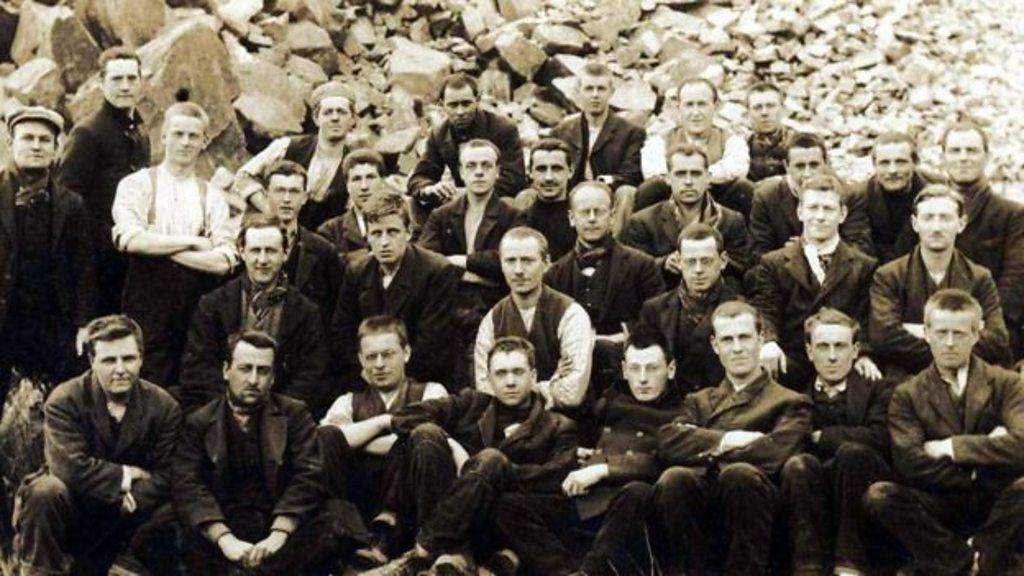WW1 conscientious objectors: Richmond Castle's history
- Published
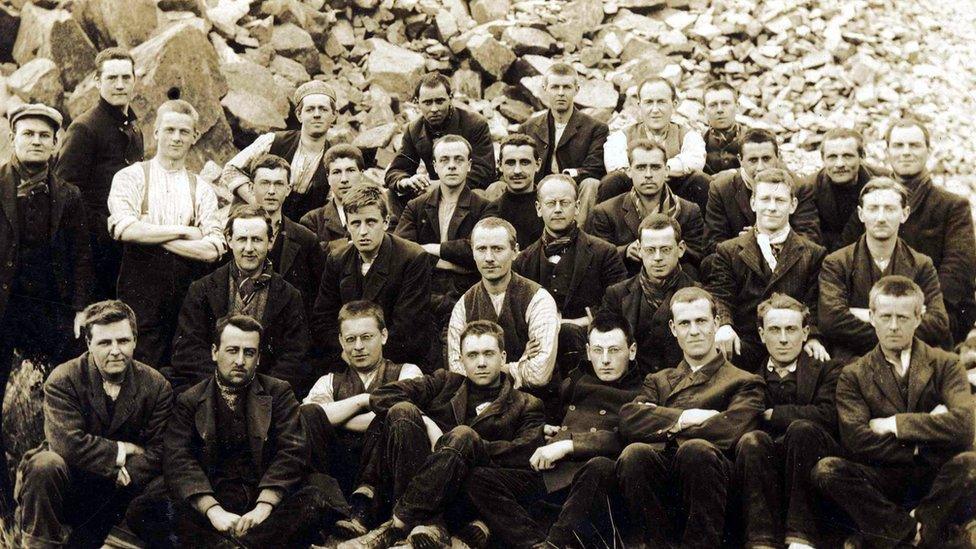
Conscientious objectors at Dyce Camp, Aberdeen, where they were sent after Richmond Castle
A new exhibition at Richmond Castle will shed fresh light on the lives of men who refused to fight in World War One.
The castle served as a barracks and prison for conscientious objectors.
The exhibition will reveal the names of 400 men who passed through, as well rare and unseen artefacts from the time.
Researchers have searched thousands of military records to compile the list.
According to English Heritage, who run the castle and museum, it is the most comprehensive list of Richmond conscientious objectors in existence.
Curator Richard Mason said: "Poring over the thousands of military records to identify these names has taken a great deal of detective work, and being able to breathe life once again into these men's stories has been a humbling experience.
"These men played an important role in the future development of human rights and deserve recognition."
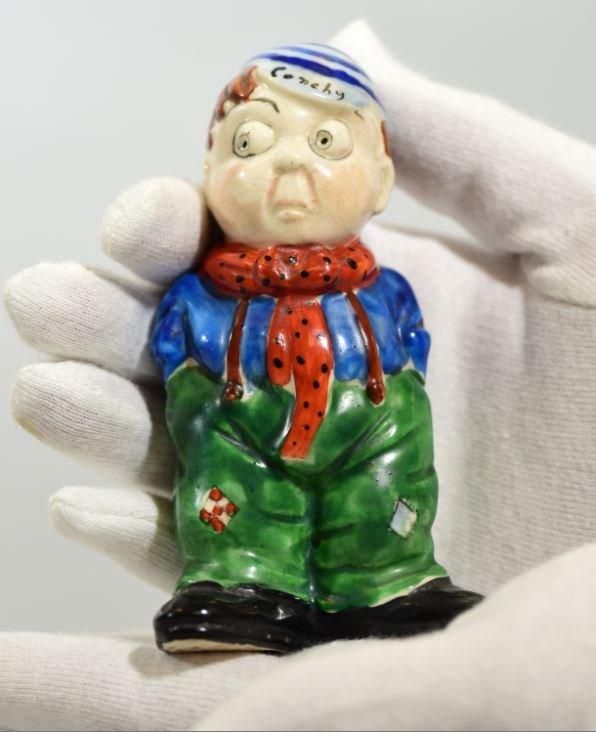
The ceramic sculpture is labelled "conchy" - a derogatory term for conscientious objectors at the time
He also praised volunteer Dawn Price for her "tireless research" on the project.
The exhibition will show what is thought to be the only accurate representation of a Non-Combatant Corps uniform, a rare 'white feather' letter sent to a conscientious objectors, a propaganda sculpture, as well as an original conscription poster, personal postcards and photographs.
More than 20,000 men registered as conscientious objectors after conscription was introduced in 1916.
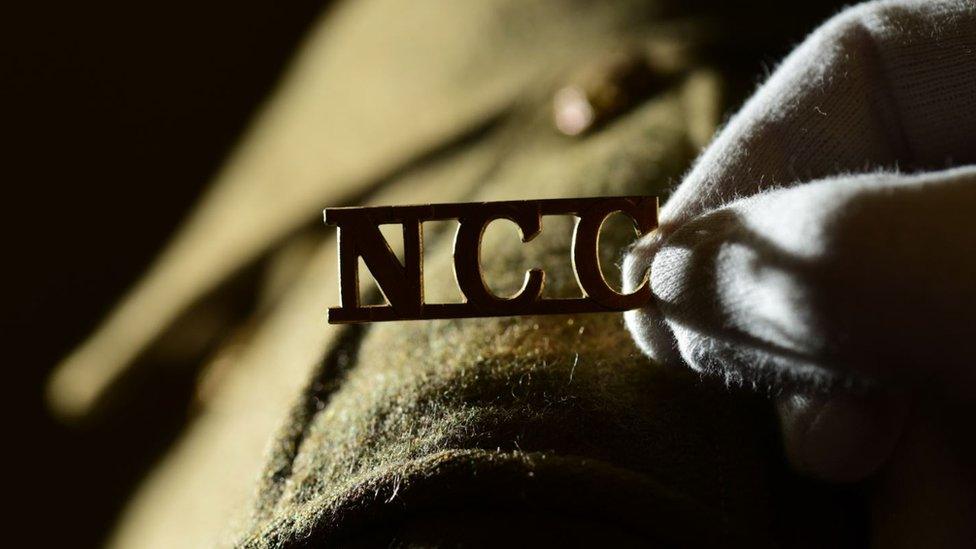
The Non-Combatant Corps uniform will be on display at the exhibition, which opens next week
Hundreds were sent to Richmond Castle and the majority trained in the Non-Combatant Corps - wearing army uniform but not carrying weapons or fighting in battles.
Some rejected any military authority and were imprisoned in the castle cells, where their graffiti is still visible.
Mr Mason said they still may never know about all the conscientious objectors who passed through the castle, and urged anyone with information to get in touch.
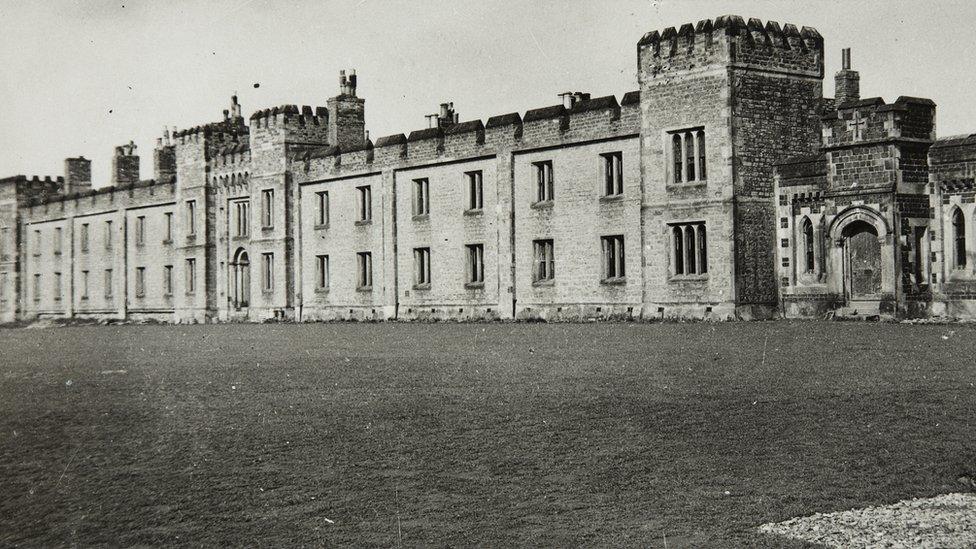
Richmond Castle was the site of a WW1 barracks and prison

Follow BBC Yorkshire on Facebook, external, Twitter, external and Instagram, external. Send your story ideas to yorkslincs.news@bbc.co.uk, external.
- Published13 May 2016
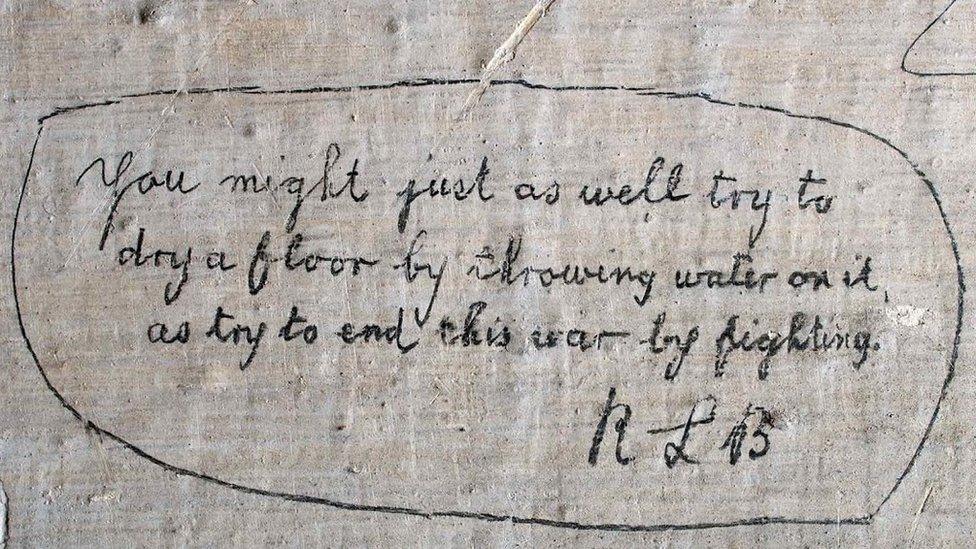
- Published13 May 2016
